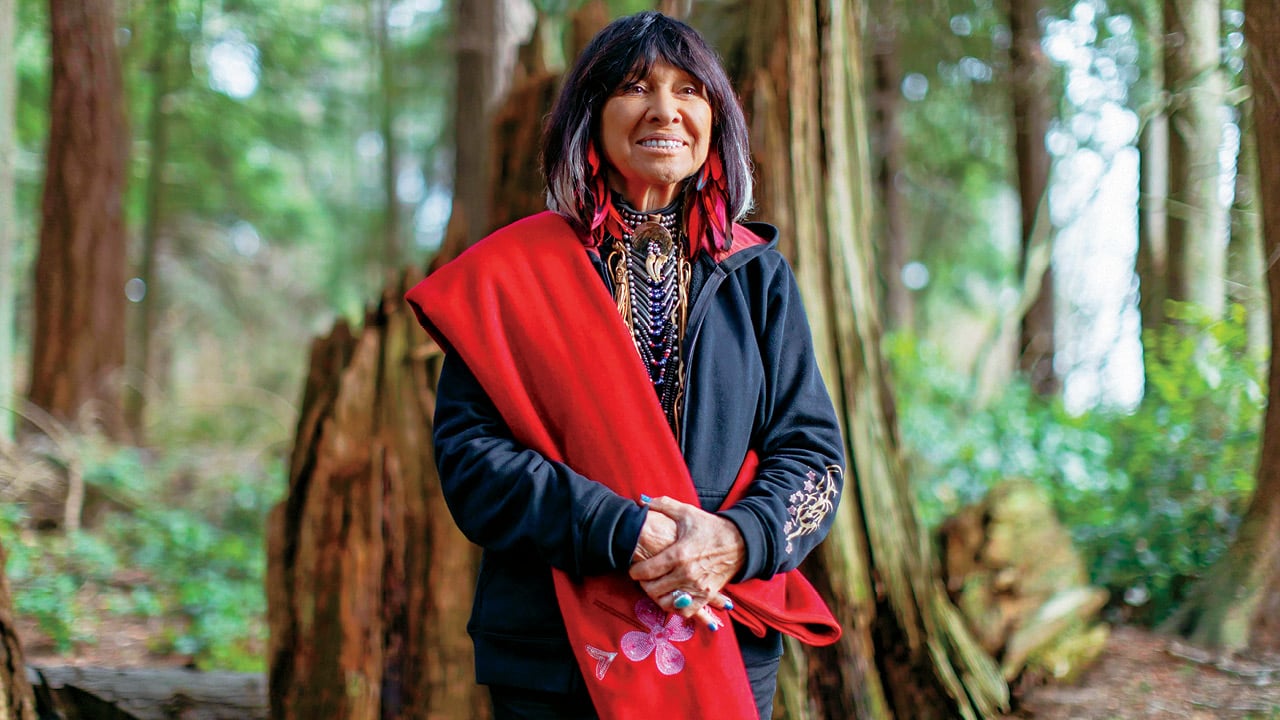QUEBEC
Environmental risks outweigh potential gains when it comes to Saguenay LNG plant, report finds
CBC Wed., March 24, 2021

The BAPE report concludes the risks associated with a plant in a region that is home to endangered species are too great. (Julia Page/CBC - image credit)
Quebec's environmental review board says the benefits of a multi-billion-dollar liquefied natural gas (LNG) plant in the Saguenay do not outweigh the environmental and social costs associated with it.
The 500-page report by the BAPE (Bureau d'audiences publiques sur l'environnement) states there is already significant global competition for LNG production and exportation, so the Saguenay project may not even be needed by the time construction is finished and the plant is up and running.
The report goes on to state the highly polarizing GNL Québec project has garnered the greatest response of any BAPE review, with more than 2,500 briefs presented at last year's hearings.
Two massive intertwined projects — the Gazoduc pipeline that will run from northern Ontario through the Abitibi and to the Saguenay, and the GNL Québec transformation plant in the Port of Saguenay — are being touted by proponents as an economic booster, job creator, and environmental innovator.
They say it will be one of the greenest LNG plants in the world, that it's possible to protect the region's endangered beluga whales from the effects of passing tanker ships through the Saguenay Fjord, and that the plant itself would be carbon neutral.
But the BAPE report is recommending the government take extra care to consider the risks to marine life, specifically the area's beluga whale population, before making any decision about the project.
It also states the company didn't provide any guarantees that exporting LNG from the Saguenay Fjord to international markets would reduce global greenhouse gas emissions, and it questioned the global demand for natural gas in the coming decades.
GNL Québec interim president Tony LeVerger said the company plans to tackle the BAPE's recommendations and answer its questions.
"Even though you can see some conclusions that may be a bit harsh at the end, as you get into the details and the contents, you realize it's a lot more balanced," he said.
LeVerger added the BAPE is not rejecting the project, but rather giving the company a nuanced and fair list of homework.
"As a company, we are optimistic we will be able to do it," he said.
Company still has work to do: environment minister
Quebec Environment Minister Benoit Charette said there are three main criteria against which his department is evaluating the project: its social acceptability, its ability to reduce global greenhouse gas emissions and its contribution to a worldwide transition toward green energy.
"The report does not allow for the conclusion that one or more of those three conditions will be respected, so the ball is really in the promoter's court," he said.
Charette said the report is an important step in the environmental review of a project, but pointed out that the BAPE does not approve or reject projects, it only makes recommendations. The government has the final say.
Energy expert Pierre-Olivier Pineau said the report was more negative than he'd anticipated, and that it does a good job of outlining the opposing views of the project.
But he added the BAPE should have limited itself to environmental analysis, instead of adding an economic one.
"I don't see a bright future for the project," he said. "And I think for politicians, the BAPE report will be a clear indication that it is too sensitive to give the OK."
But Pineau explained he agrees with GNL Quebec that natural gas could in fact play a role in the energy transition.
"In terms of the global greenhouse gas assessments, [the BAPE is] leaning on the extremely conservative side," he said. "So I wouldn't say it's entirely fair, because they are presenting the worst case scenario as the one that should be taken into account."
Environmental groups react
Adrien Guibert-Barthez of Coalition Fjord — a citizens' coalition working for ecological stability in the region — said he's "very happy" with the BAPE's summation of the project.
"The assessment confirmed all the claims and positions of environmental groups about greenhouse gases and the impact on whales, specifically," he said.
"We should not have to debate whether or not we should construct more pipelines," he added. "We should talk about how we can transition from fossil fuels to green energy."
The director of Nature Quebec, Alice-Anne Simard, called the report "devastating" for the LNG project and said she hopes it will give the government everything it needs to reject it.
"The quicker we can put this project aside and say 'no', the quicker we can start all working together to put in place the green transition that we need," she said.
Simard also said the project is a non-starter, and she doesn't believe there's any way for the company to fix it, because, in her view, it is an inherently bad idea.
"This is not a good project for Quebec, this is not a good project for the world, and the government doesn't need any more information, they can say 'no' to this project right away," she said.
This report focuses primarily on the $9-billion LNG plant and marine terminal at the Port of Saguenay, while the $5-billion Gazoduc pipeline will be evaluated separately.
52% of Quebecers reject planned natural gas project: poll
Wed., March 24, 2021
Opposition to a Quebec natural gas project is rising, according to a new poll, with 52 per cent of people in the province saying they’re against the GNL Québec project.
The multibillion-dollar plan includes three things: a 750-kilometre-long gas pipeline by Gazoduq; a gas liquefaction plant by Énergie Saguenay; and a super-methane ship export terminal. It would take fracked natural gas from northern B.C. and Alberta through already built pipelines to Ontario, ultimately sending liquefied natural gas to foreign markets, such as Europe and Asia.
Using the Saguenay Fjord, which runs through a national park in Quebec, the LNG tankers would put endangered beluga whales and other marine populations at risk, say environmental groups such as Greenpeace.
The Léger poll, conducted between March 19 and March 21, compared data from the same survey question asked in November: "Are you in favour or against this project?" In four months, opposition jumped six points, from the original 46 per cent opposed, the poll found. Opposition was strongest among 18- to 34-year-olds, with 59 per cent against. Six per cent of those surveyed across the province said they felt “very favourable” about the project.
Coalition Fjord, the Rouyn-Noranda Anti-Pipeline Coalition, Eau Secours, Équiterre, the David Suzuki Foundation, Greenpeace, Nature Québec and the Regroupement vigilance hydrocarbures Québec commissioned the survey, which has a maximum margin of error for the sample of 1,002 respondents of plus or minus 3.1 per cent, 19 times out of 20.
“... There is no doubt that support for GNL Quebec continues to melt away and that the project does not meet the criteria of social licence,” said the groups in a statement.
“The survey results also show that the more people know about the project, the more they are opposed to it. The Legault government must take note of this and categorically reject GNL Quebec.”
It’s not just the public that’s speaking out against the project. The Quebec Liberal Party, the Parti Québécois and Québec Solidaire, representing 58 per cent of the electorate, have all voiced their opposition.
Public awareness of the project is also up. Now, 42 per cent of people in Quebec say they’ve heard of the project, compared to 31 per cent during November’s poll. That’s thanks to growing mobilization, says Alice-Anne Simard of Nature Québec.
“So for us, it's a clear sign that the project is not welcome in Quebec,” she said.
The poll comes before the release of an environmental assessment report from the Bureau d'audiences publique sur l’environnement (BAPE), which has been collecting feedback specifically on the liquefaction plant, set to be built in Saguenay. It’s Simard’s hope that the feedback from the report, combined with the results from the poll, will prompt the cancellation of the gas project.
“And for us, we want to send a clear message to the government that when the report is published, that they should quickly say no to the project,” said Simard.
Cloe Logan / Local Journalism Initiative/ Canada’s National Observer

























